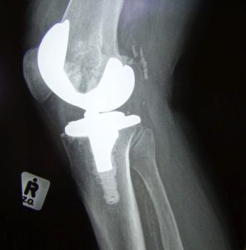

Most people’s to-do lists are, almost by definition, pretty dull, filled with those quotidian little tasks that tend to slip out of our minds. Pick up the laundry. Get that thing for the kid. Buy milk, canned yams and kumquats at the local market.


Most people’s to-do lists are, almost by definition, pretty dull, filled with those quotidian little tasks that tend to slip out of our minds. Pick up the laundry. Get that thing for the kid. Buy milk, canned yams and kumquats at the local market.


A quick note: Nature announced yesterday that it will make all of its articles free to view, read, and annotate online. That applies to the historic science journal (launched in 1869) and to 48 other scientific journals in Macmillan’s Nature Publishing Group (NPG). Other titles include Nature Genetics, Nature Medicine and Nature Physics.


Federal spending on scientific research hasn’t kept up with inflation in recent years, and it’s made it harder for researchers to fund their work. Some of them are turning to another source: crowdfunding. But this funding source raises new questions for scientists.


“Today, on this stage in the auditorium of Richard Montgomery High School – a magnet school that symbolizes the quality education that is Montgomery County – I stand before you with great humility and excitement about the future as I begin my third term as your County Executive.”
“I have learned throughout my life that families are our “links” to our past, our anchors in the present, and bridges to our future. So, to my family, your love, support and patience have kept me grounded.”


Every once and a while we get a clear example of the gulf between those battling over important public policy issues and can understand why the public and policy makers are confused by resulting charges and counter charges. Last week was a good illustration.


The Washington Business Journal interviewed Leslie Ford Weber, JHU’s director of the Montgomery County Campus and of government and community affairs for Montgomery County. The feature ran as an Executive Profile on Nov. 14, 2014. It was written by Vandana Sinha, an assistant managing editor at the Washington Business Journal. The photo was taken by Joanne S. Lawton.


That next blockbuster drug? It all begins with a hypothesis: GlaxoSmithKline just announced the winners of its second Discovery Fast Track Challenge – a competition that teams up American and European academia with GSK researchers to speed up their search for new therapeutics.


David Chalker, 50, has excruciating pain in his hip. He’s an Army veteran and because of the pain, he had to leave his job as a machinist, which left him in a great deal of debt and unable to pay for health insurance. He, his wife, and his three daughters needed to move in with his in-laws as a result.


The stampede is back on among venture capital firms to raise new money and close more funds, after years of standing pat following the recession and years of sluggish recovery.


Small businesses are a major driver of high-technology innovation and economic growth in the United States, generating significant employment, new markets, and high-growth industries.1 In this era of globalization, optimizing the ability of small businesses to develop and commercialize new products is essential for U.S. competitiveness and national security. Developing better incentives to spur innovative ideas, technologies, and products—and ultimately to bring them to market—is thus a central policy challenge.